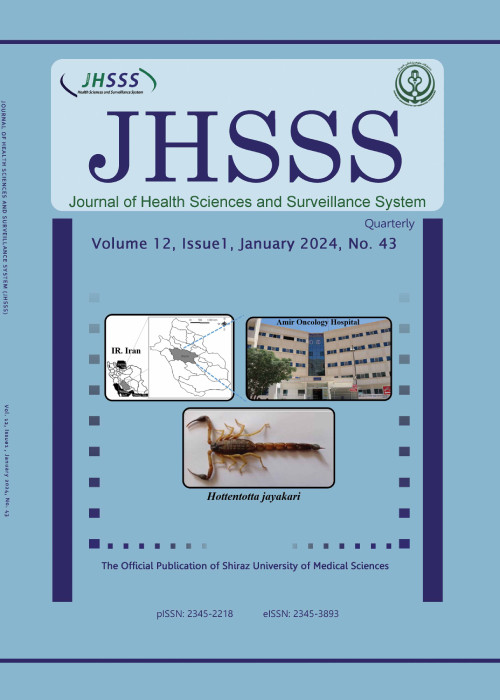A Proposed Algorithm of Screening and Management of Lipids in Adults for Iranian Family Physicians
Author(s):
Abstract:
Cardiovascular disease (CVD) due to atherosclerosis is the foremost cause of premature mortality and of disability-adjusted life years (DALYs) in developed and developing countries (1). The associated mortality is preventable through treatment of dyslipidemia (2). Over half of the first CHD events and 3/4 of CHD deaths are preventable by controlling the risk factors, including diet, exercise, weight and blood pressure control; prescription of aspirin and tobacco cessation; and lowering lipids (3). Dyslipidemia covers the broad spectrum of lipid abnormalities (4). However, elevations of the total cholesterol and low density lipoprotein cholesterol (LDL-C) have received the most attention (4). Epidemiologic data revealed that about 70 million Americans had elevated levels of LDL cholesterol between 2005 and 2008 (5). Abnormalities in lipid components are prevalent in Iran and they are more common among men in urban areas. Urbanization, unhealthy diet and sedentary lifestyle are the underlying reasons for the high prevalence of dyslipidemia in Iran (4). Dyslipidemias may be related to other diseases (secondary dyslipidemias); therefore, secondary causes of abnormal lipid levels should be considered first and treated when appropriate (6).The primary target in treating dyslipidemia has been and will probably continue to be LDL cholesterol because it is the most atherogenic lipoprotein which correlates more closely than other lipids with CHD (7). Statin therapy is likely to continue to be emphasized because they are the most effective lipid-lowering agents for reducing LDL cholesterol concentrations, and their efficacy for lowering the risk for cardiovascular events has been proven (8). Every 1.0 mmol/L (40 mg/dL) reduction in LDL-C is associated with a corresponding 22% reduction in CVD mortality and morbidity (9). Patients with an elevated LDL-cholesterol level should begin the Therapeutic Lifestyle Changes program as well as an individualized program of regular exercise. Lifestyle modifications include diet, aerobic exercise, weight control, smoking cessation, evaluation of alcohol consumption; and a nutritional supplement containing sitostanol ester, a saturated derivative of plants’ seed oil (6). Diet and exercise are the cornerstones of treatment for asymptomatic patients with dyslipidemia (6). Smoking cessation reduces coronary event rate by about 50% within one to two years of stopping. Among the benefits of smoking cessation is a 5-10% increase in HDL-C (3). Clinicians should initiate statin therapy regardless of LDL, in patients with established ASCVD. Statins are the drugs of choice for lowering LDL-cholesterol, and aggressive treatment with statins should be pursued (6). Large scale clinical event trials include lovastatin, pravastatin, simvastatin atorvastatin, and rosuvastatin (3). Statin Dose Intensity is shown in Table 1 (3).
Language:
English
Published:
Journal of Health Sciences and Surveillance System, Volume:4 Issue: 1, Jan 2016
Pages:
50 to 53
magiran.com/p1480072
دانلود و مطالعه متن این مقاله با یکی از روشهای زیر امکان پذیر است:
اشتراک شخصی
با عضویت و پرداخت آنلاین حق اشتراک یکساله به مبلغ 1,390,000ريال میتوانید 70 عنوان مطلب دانلود کنید!
اشتراک سازمانی
به کتابخانه دانشگاه یا محل کار خود پیشنهاد کنید تا اشتراک سازمانی این پایگاه را برای دسترسی نامحدود همه کاربران به متن مطالب تهیه نمایند!
توجه!
- حق عضویت دریافتی صرف حمایت از نشریات عضو و نگهداری، تکمیل و توسعه مگیران میشود.
- پرداخت حق اشتراک و دانلود مقالات اجازه بازنشر آن در سایر رسانههای چاپی و دیجیتال را به کاربر نمیدهد.
In order to view content subscription is required
Personal subscription
Subscribe magiran.com for 70 € euros via PayPal and download 70 articles during a year.
Organization subscription
Please contact us to subscribe your university or library for unlimited access!


